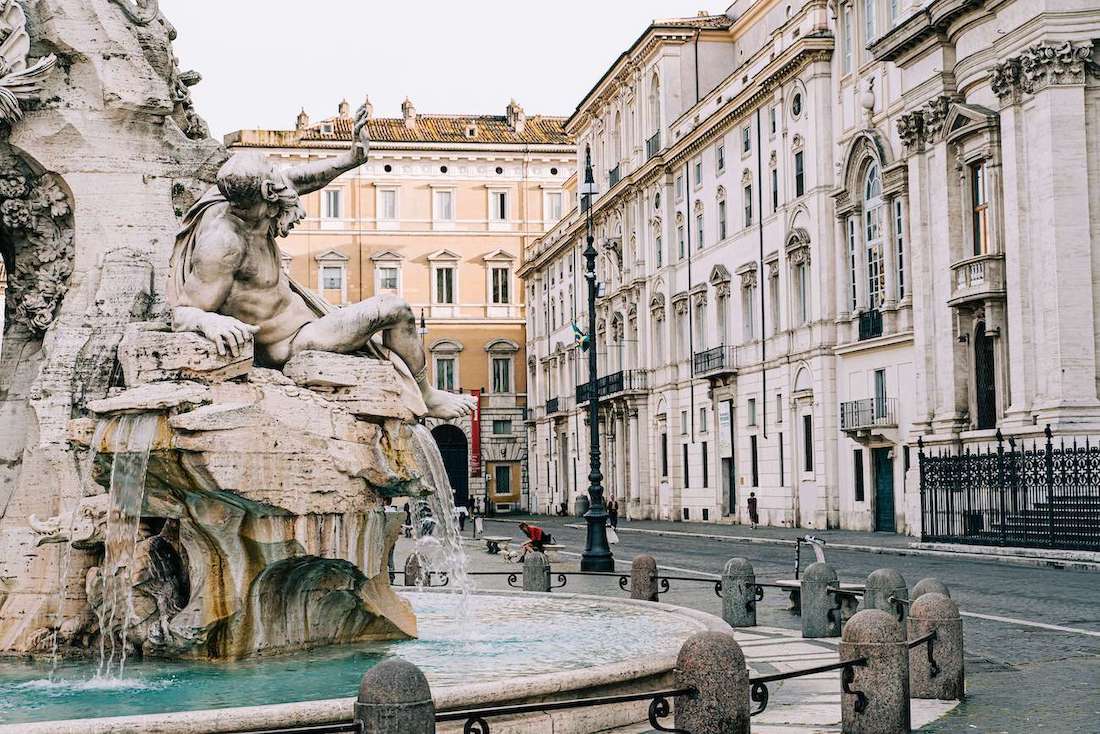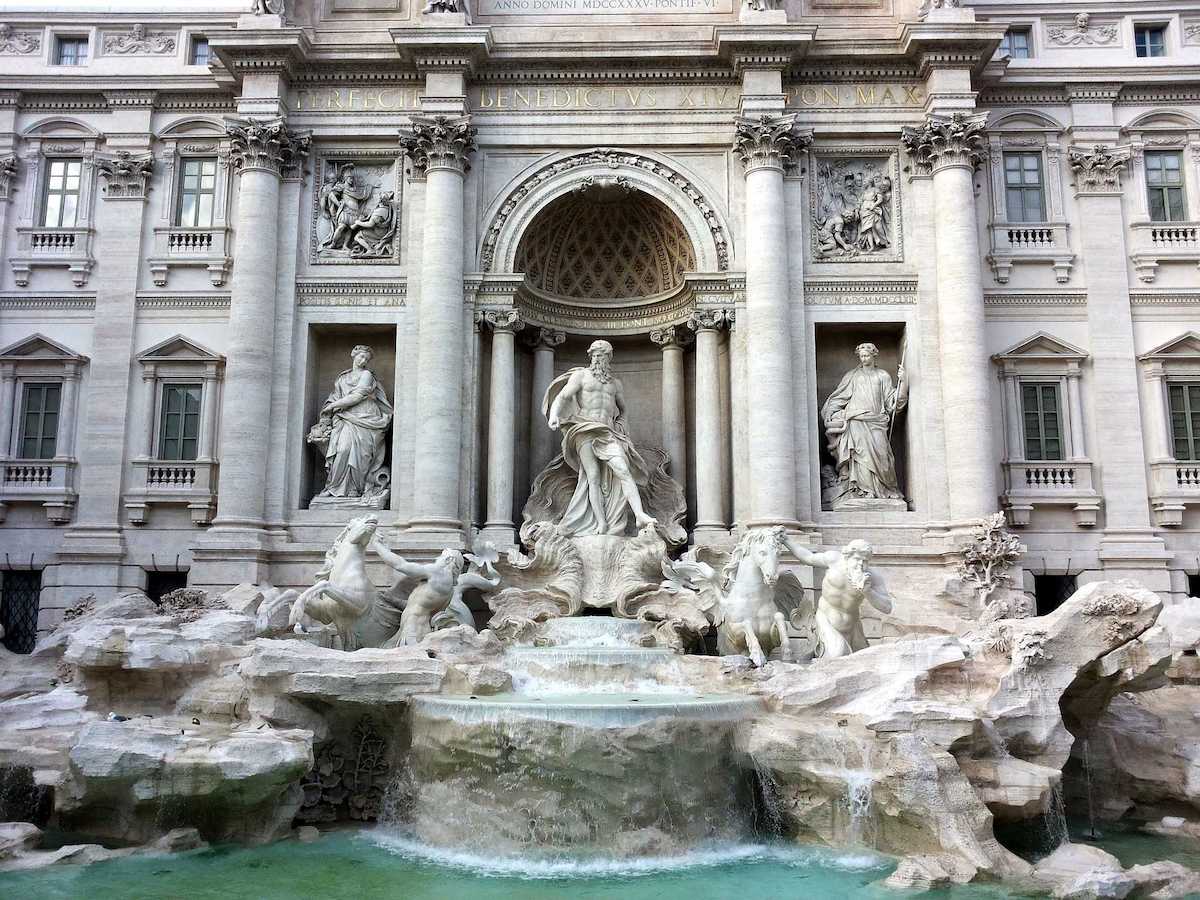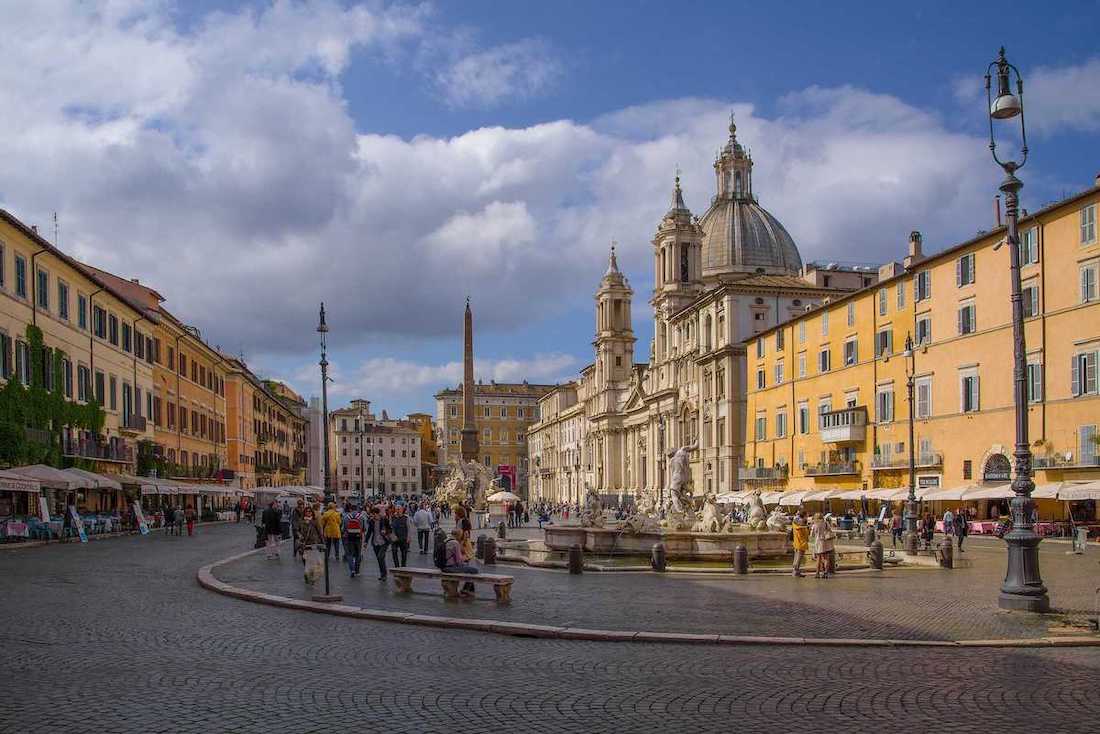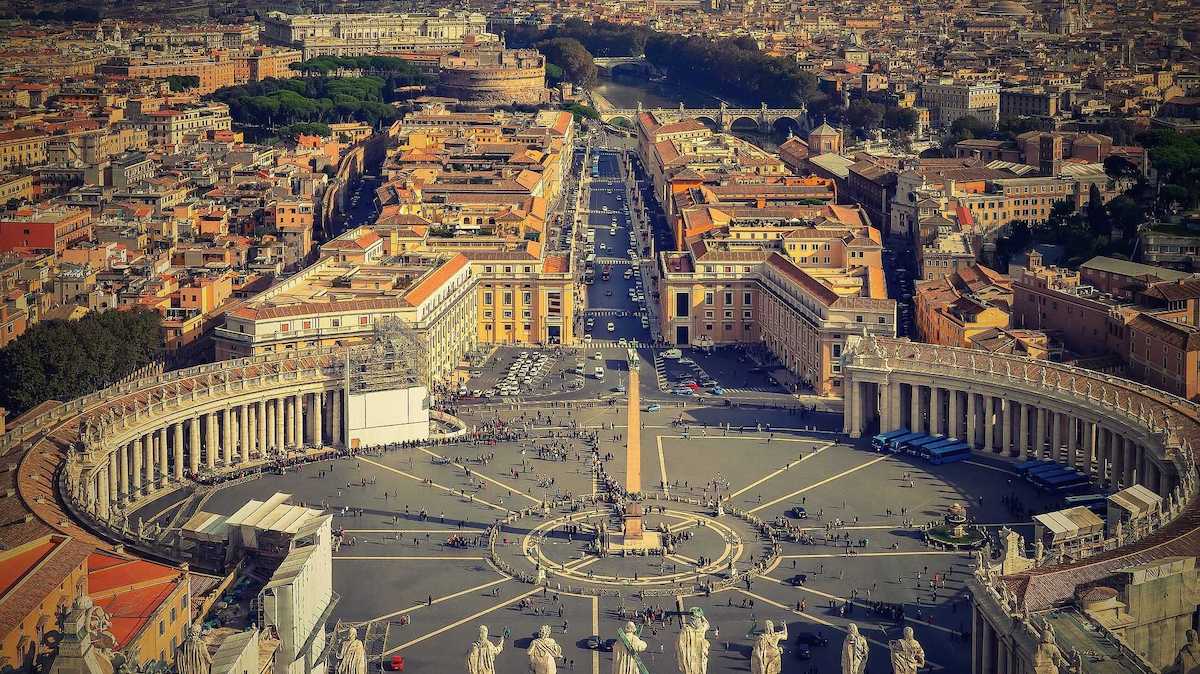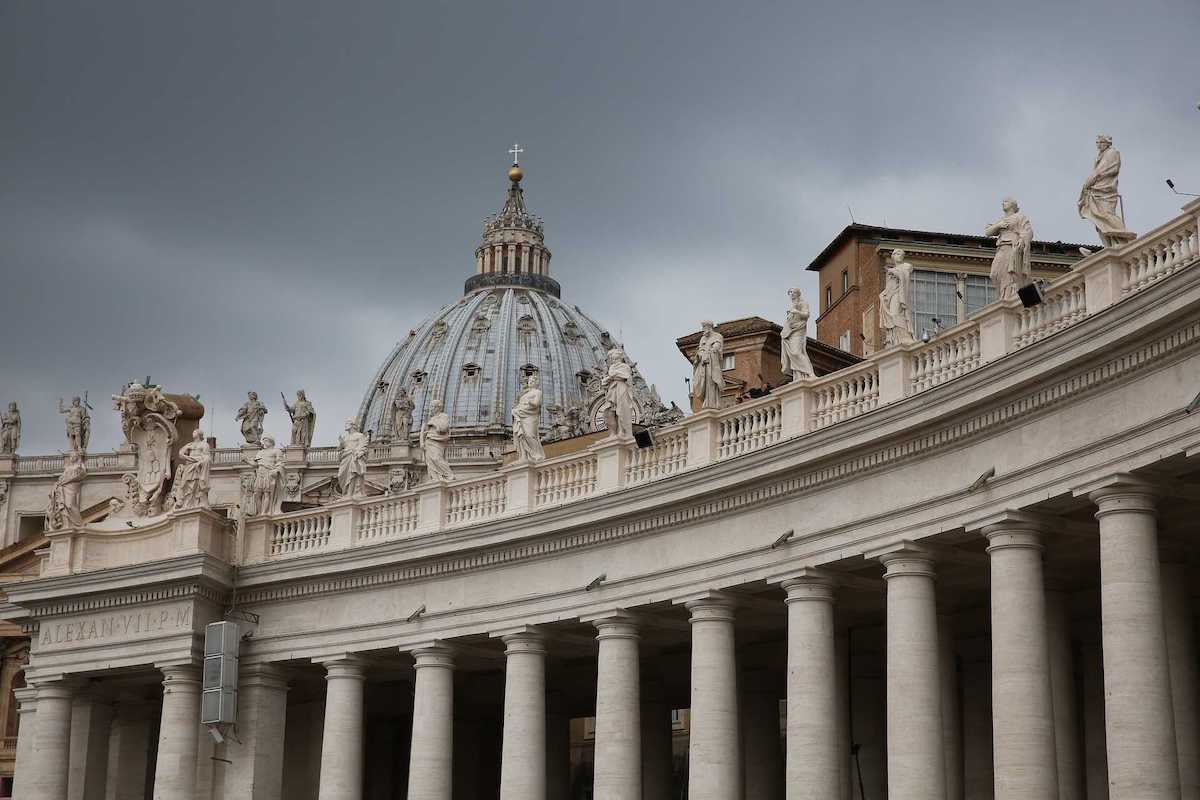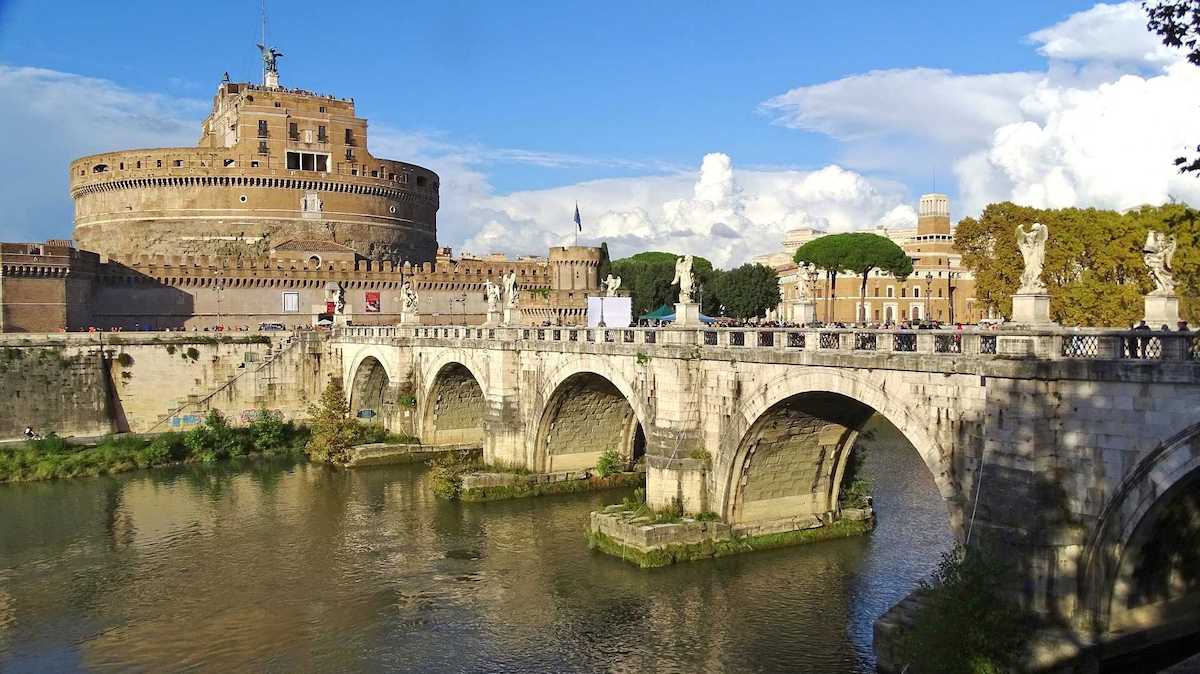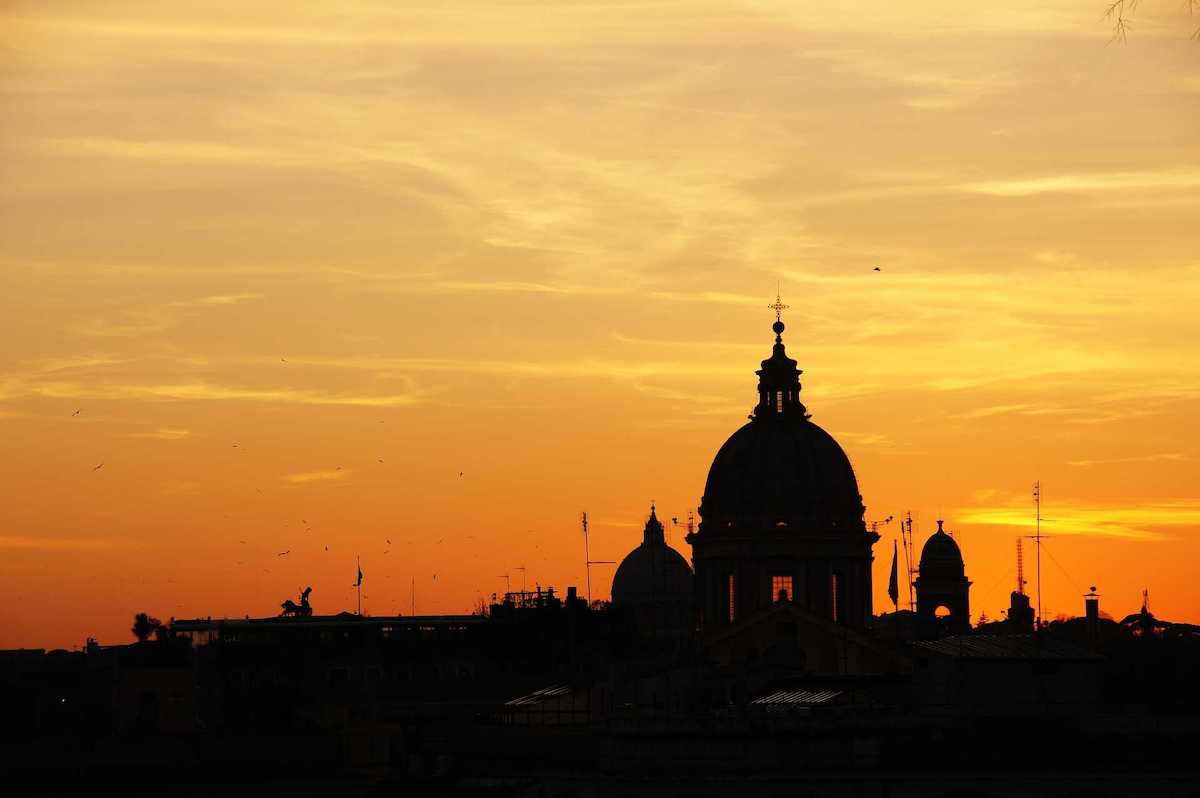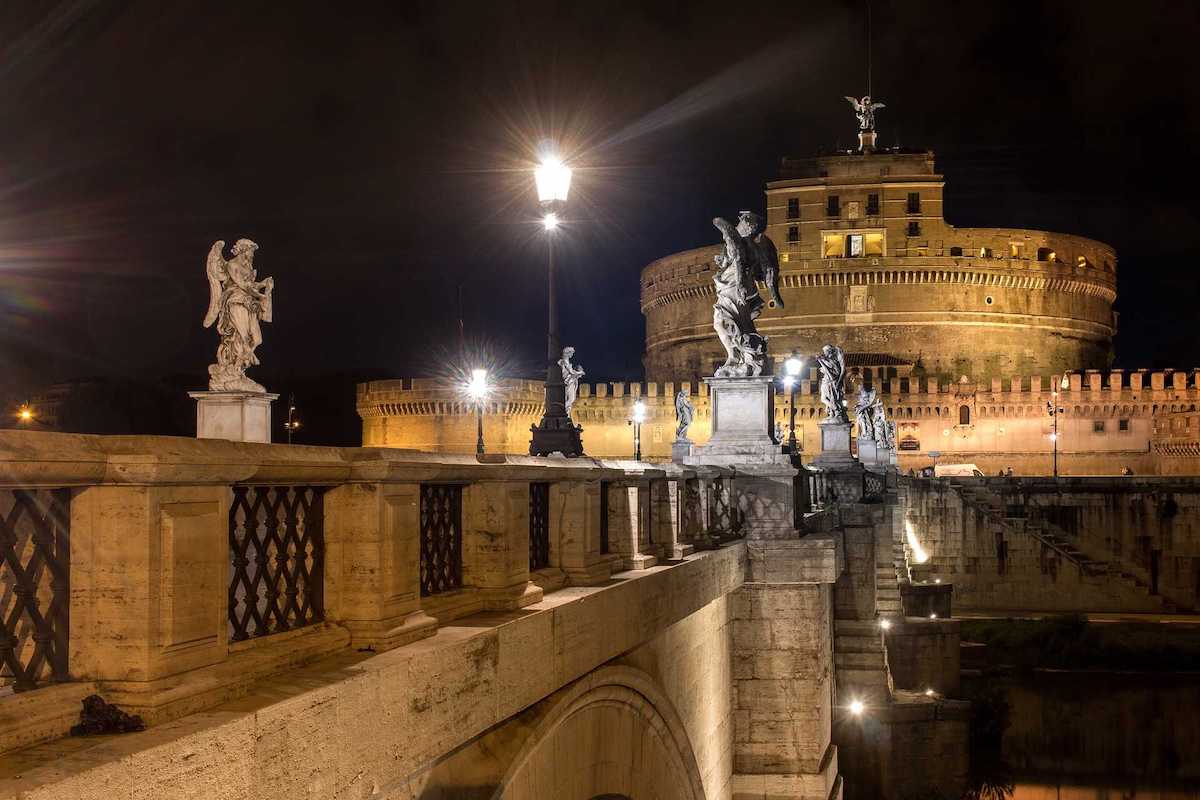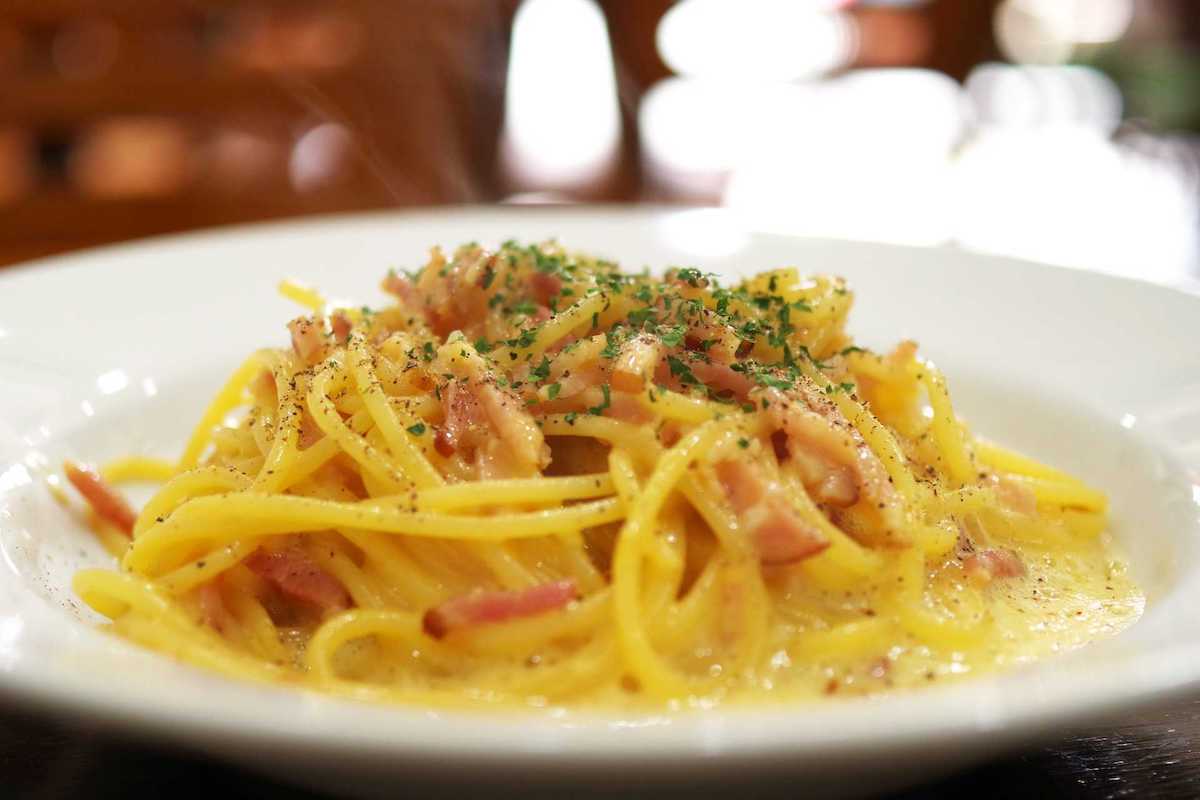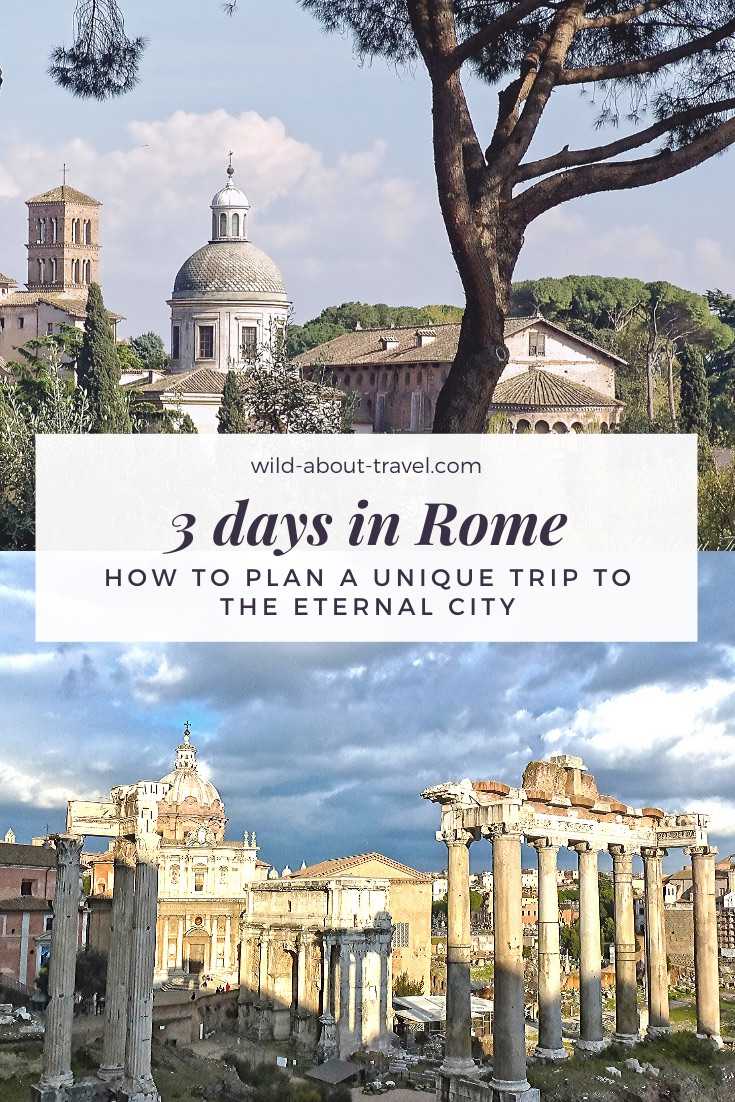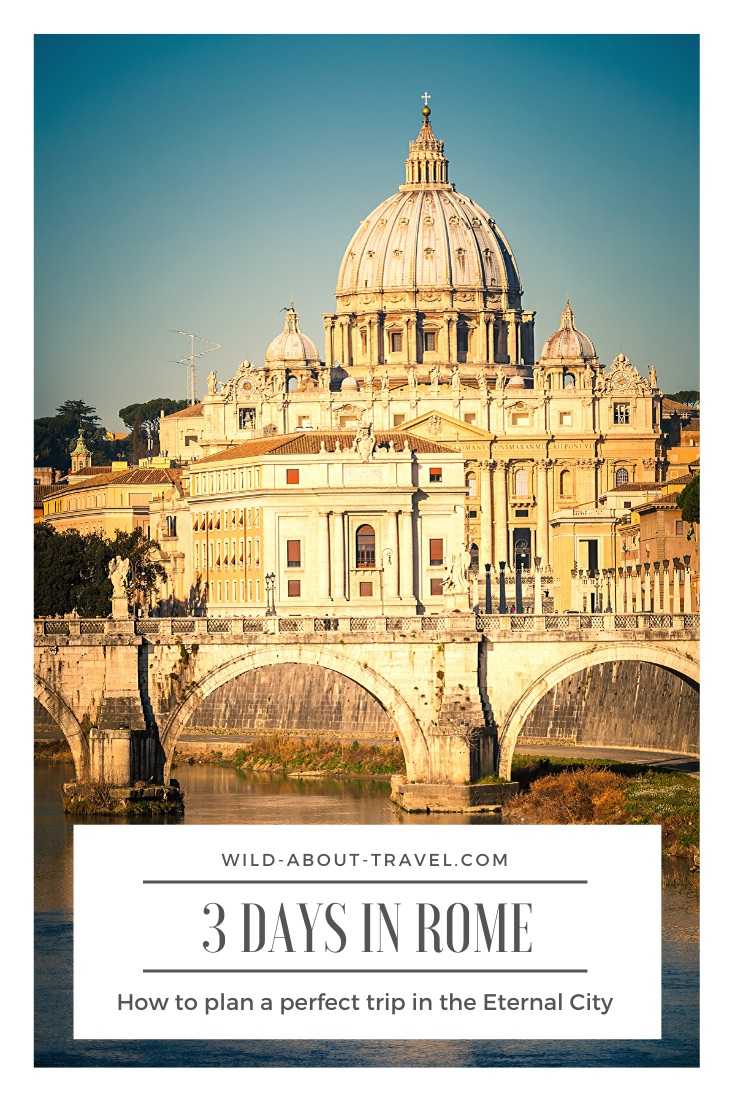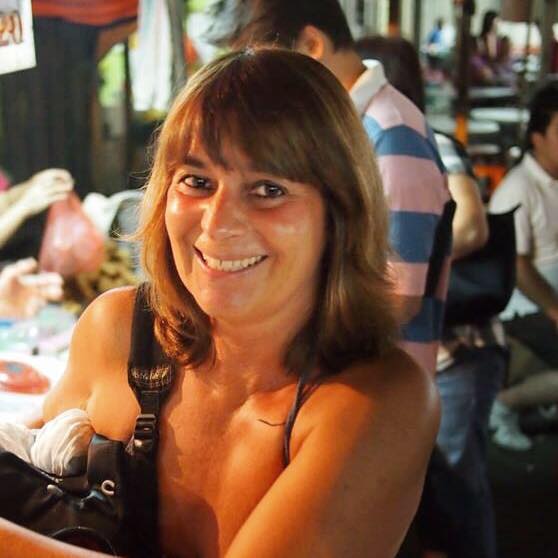What can you see in Rome in 3 days? If you have only 72 hours to visit The Eternal City, you might wonder if this is a “mission impossible.”
Well, it is not, provided you have an excellent 3-day Rome itinerary. That’s especially important if you’re visiting Italy for the first time and don’t have many days.
Since there’s so much to see in Rome, all you have to do is keep reading. Find out the best things to do in Rome in three days. As a local, I share my best tips that will make a difference between a plain travel experience and the perfect one you wish for.
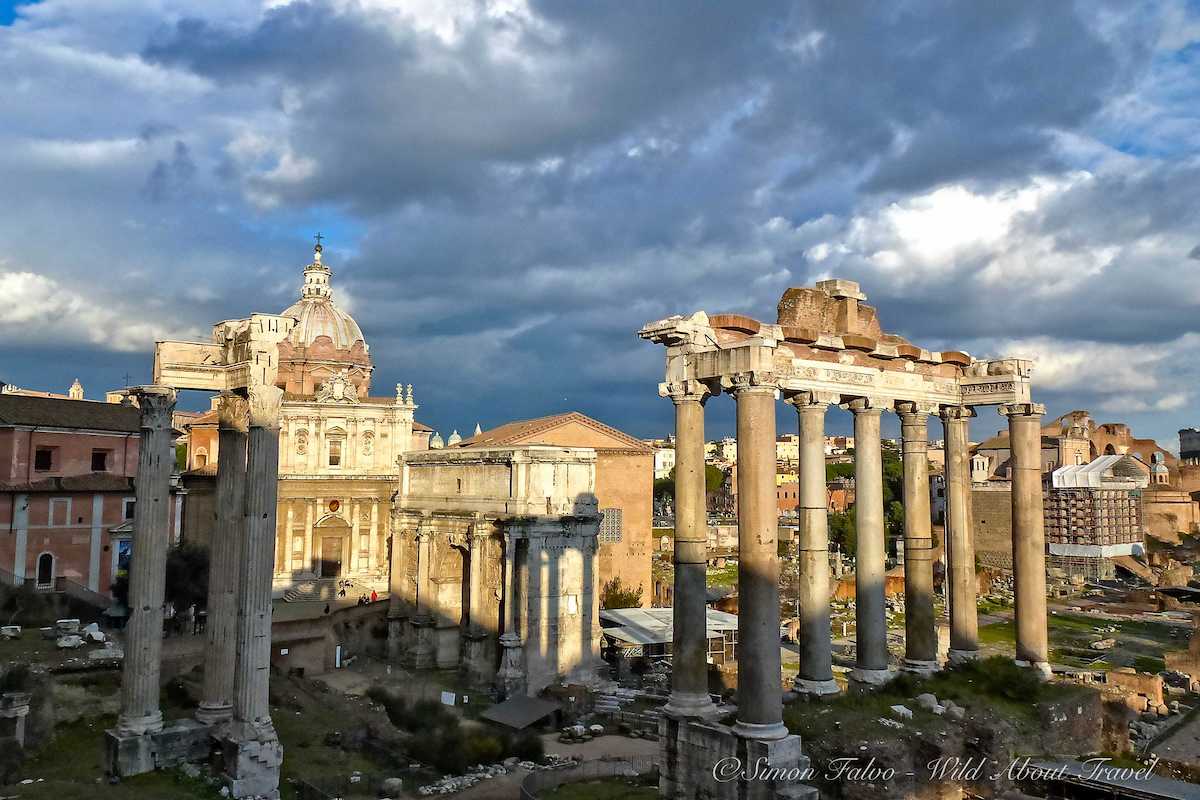
Rome in 3 days: Quick tips to plan your trip
Start planning your 3 days in Rome with these quick tips.
Where to stay
Modern and stylish: Hotel Otivm
Romantic: Il Monastero Collection
Luxury: Rocco Forte Hotel de La Ville
Little things that make a big difference
Private transfer from Rome Fiumicino airport to Rome: slightly more expensive than the train, but so much more comfortable.
A guided tour of Rome is an excellent way to get an introduction to the city and the most important monuments in Rome. How about a 3-hour bike ride with a guide or discovering Rome riding an iconic Vespa scooter?
Don’t forget a Universal Travel Adapter to recharge all your devices.
If you haven’t one already, buy an anti-theft backpack for safety and peace of mind.
Be sure that your smartphone will never let you down with a portable battery charger.
3-day Rome itinerary
When I travel, I like building flexible itineraries that allow me to reshuffle things if needed. The reason? I prefer wandering around when the weather is good and visiting monuments and museums indoors during the remaining time. Also, I try to focus on a few contiguous areas to avoid running from one neighborhood to another. Notably when I visit a big city. How does that impact your Rome itinerary?
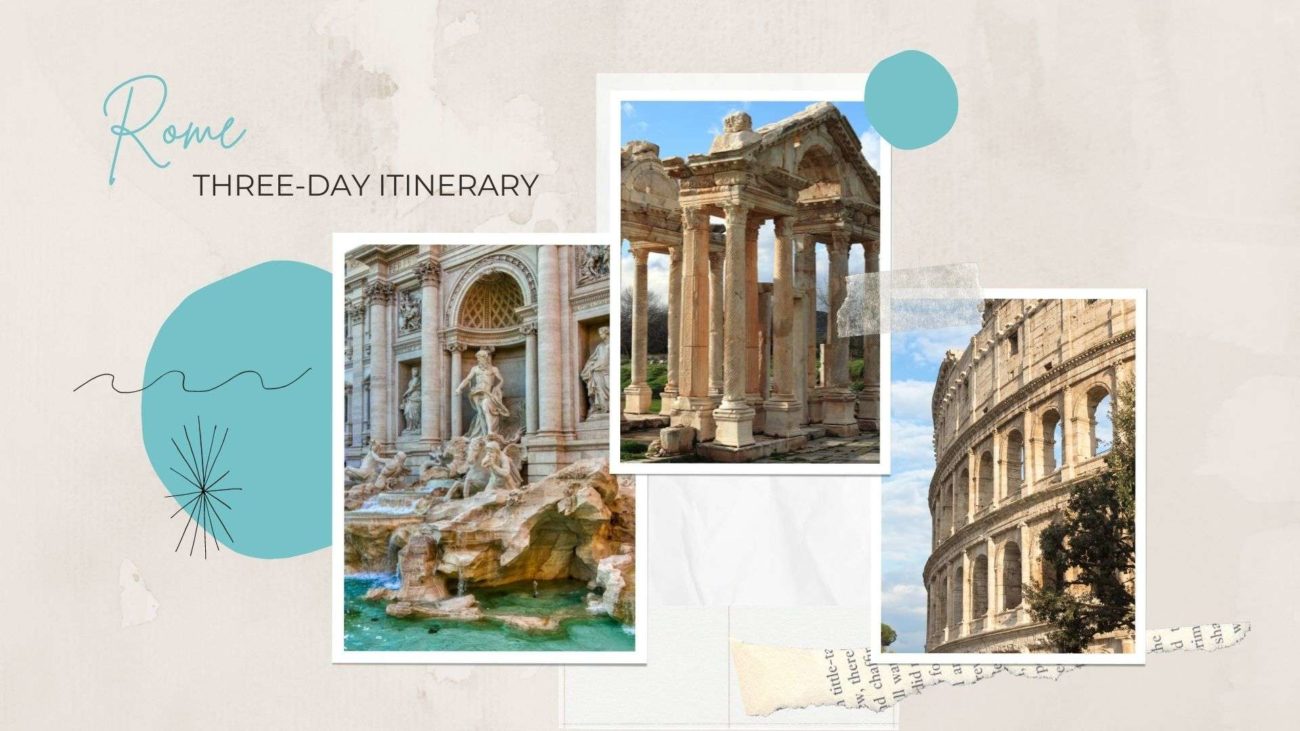
To visit Rome in 3 days, I suggest starting your itinerary from the right bank of the Tiber River, where many of the best Rome attractions are located. Then, you can spend the remaining two days in Rome visiting other must-sees. The Roman ruins, the Vatican Museums, Trastevere, and more.
Most of Rome’s must-see locations are concentrated in the historic center, some of them a near distance. Good news when you have to optimize the time of your visit! The historic center of Rome, including the Holy See, is one of the most beautiful UNESCO World Heritage Sites in Europe and in the world.
Rome in three days: itinerary and map
The map helps you identify the most important monuments of Rome by location. You can see defined areas marked by different colors: green for day 1, purple for day 2, and orange for day 3. This allows you to optimize your time, and it doesn’t really matter the order in which you build your 3-day Rome itinerary.
Rome itinerary: Day 1
Piazza del Popolo
There’s nothing more fascinating than starting your walk from Piazza del Popolo on a bright day.
Admire the beautiful symmetry of this huge scenographic square, with the Egyptian Flaminio Obelisk at the center. Look at the twin baroque churches of Santa Maria dei Miracoli and Santa Maria di Montesanto. They define the so-called “tridente,” the trident, a three-road span with Via del Corso at the center.
Via del Corso, Via Condotti, and Via Frattina
Keep wandering and visit some of the most iconic fashion brands’ shops along Via Frattina and Via Condotti for a luxurious window shopping experience.
Tip: celebrities and VIPs gravitate towards this part of Rome’s Centro Storico, so it is not rare to see them. Be ready for an autograph or a selfie with your favorite star (but ask gently!).
Piazza di Spagna, the Spanish Steps and Trinità dei Monti
Piazza di Spagna and the Spanish Steps (Scalinata di Trinità dei Monti), among the most important landmarks in Rome, are just a stone’s throw away. Slowly climb the 135 steps to get a stunning view of the square and the surroundings. In Spring, you’ll see the Spanish Steps in full bloom, with the large pots of beautiful pink azaleas that Rome Municipality places on the steps. In June, the steps are the (tricky!) catwalk for “Donna sotto le Stelle“, the event that closes Rome’s fashion week.
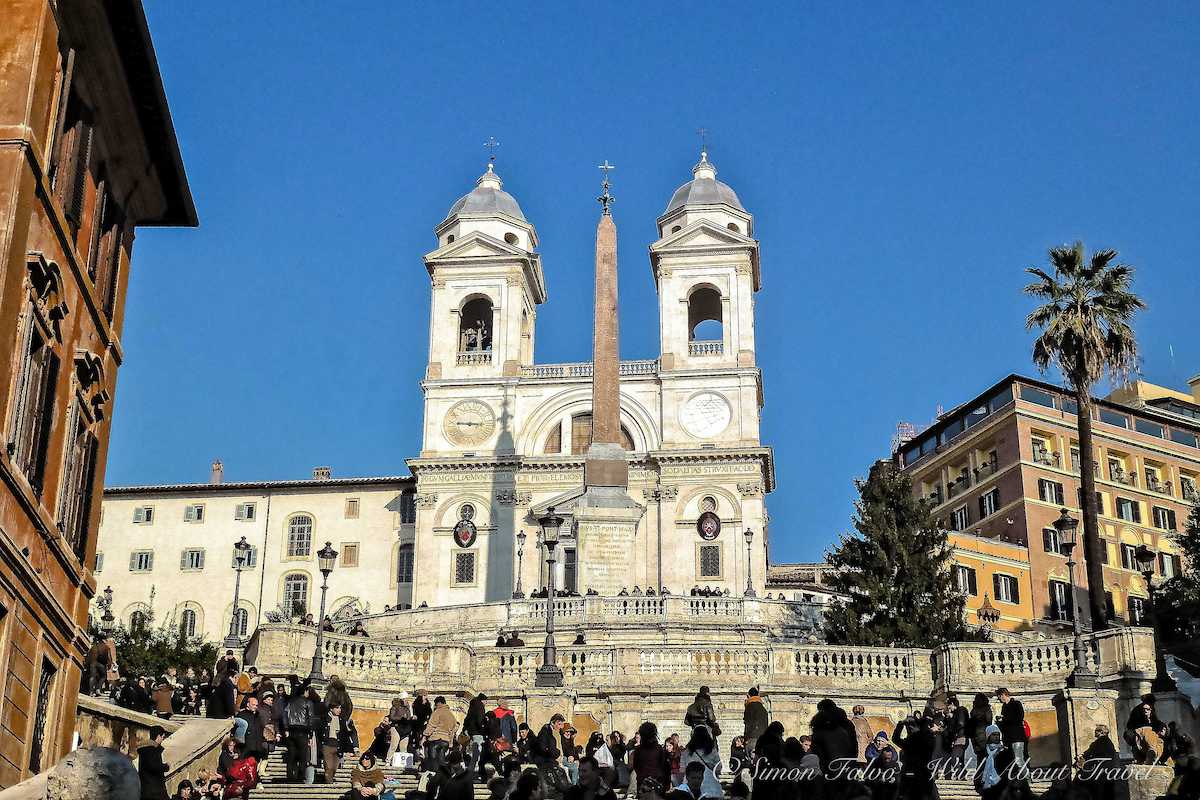
Tip: For a long time, locals and tourists enjoyed sitting on the steps to relax, chat, or eat gelato. However, starting in 2019, this is no longer permitted to protect the monument’s decorum.
Fontana di Trevi (Trevi Fountain)
The sound of the splashing waters of the Trevi Fountain (Fontana di Trevi) will capture your ears before you get sight of this astonishing Baroque masterpiece. The fountain is huge, and the location is always crowded, day and night – sometimes to the point you almost cannot walk.
The best moment to see it at your own pace is (probably) early in the morning. As the saying goes, “The early bird catches the worm”!
Tip: Don’t forget to toss a coin in the fountain since tradition says this will guarantee your return to Rome. In case you are wondering, the municipality regularly collects all the coins to give to charity.
Pantheon
You can reach the Pantheon within a short walk from Trevi Fountain. Enter this former pagan temple and raise your head to admire the 2,000-year-old dome, with its astonishing “hole” (in Latin “oculo“) filled with natural light.
Beware that since July 3, 2023, access is no longer free to admire this famous landmark. You must now pay a 5 euro entrance fee to visit the Pantheon.
Being one of the most visited monuments in Rome, I strongly recommend buying your skip-the-line ticket to the Pantheon in advance to avoid or at least limit the queues.
Tip: Enjoy Italian ice cream or an expresso at Giolitti. This traditional Italian ice cream shop has been in operation since 1900!
Piazza Navona
From the Pantheon to Piazza Navona, it’s only a short stroll. The piazza was built on the former Stadium of Roman Emperor Domitian, hence its peculiar oval shape. Ancient Romans went there to see the games (“agones“) and have fun.
Today, street performers, artists, fortune tellers, and a traditional Christmas market are present here. However, it all depends on the time of year and the municipality’s decisions regarding permissions.
To me, Piazza Navona is one of the most beautiful squares in Italy, on par with San Marco Square in Venice, Piazza del Duomo in Florence, and a few others.
Villa Borghese
This huge public park (approximately 80 hectares) is one of the most popular in the city. Besides the green areas, perfect for a relaxing walk or a bike ride the park includes several historical buildings, fountains, and a romantic lake. Don’t miss the opportunity to visit the stunning art collection of Galleria Borghese, in the “Villa Borghese Pinciana” built by architect Flaminio Ponzio.
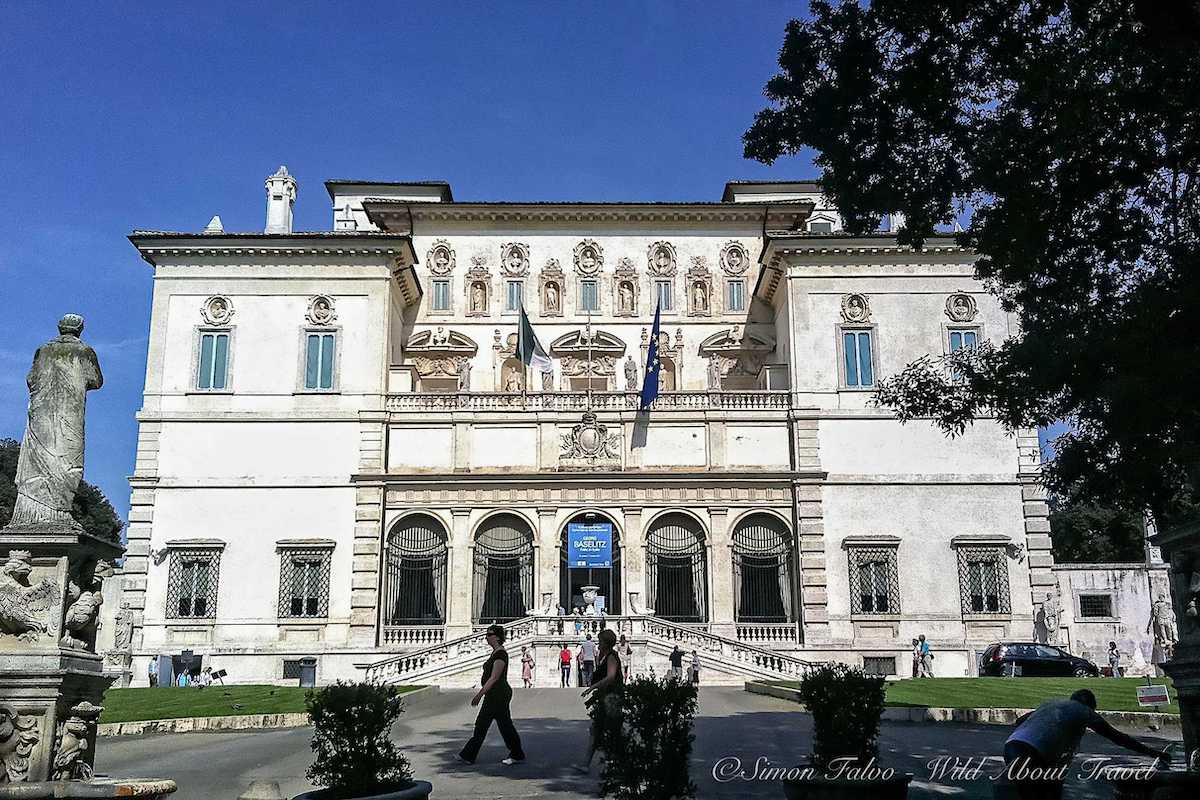
Some years ago, Villa Borghese Park was also enriched with the Silvano Toti Globe Theatre, a reconstruction of the famous Globe Theatre of London.
To visit Villa Borghese, you need actually to go back to the starting point, Piazza del Popolo. From there, you can climb up the Pincio terrace – a great spot for sunset watching – and then leisurely stroll in the park.
By the evening, you’ll know that discovering Rome in 3 days involves a lot of walking. How about exploring Rome by night by riding an e-bike?
Rome itinerary: Day 2
Let’s start the second morning of your 3 days in Rome with the Roman ruins, one of the most beautiful archaeological sites in the world. Get ready for a lot of walking, so wear comfortable shoes and clothes.
Discover the Colosseum
Nothing compares to ancient Rome’s archaeological heritage. Start with a visit to the Colosseum, the world’s largest amphitheater.
The Colosseum was built almost 2,000 years ago, during the reign of Emperor Vespasian. It was completed in AD 80 by his son, Titus, and it’s considered a marvel of ancient engineering. Looking at its massive structure, it’s hard to believe it took only a little more than 5 years to build. The Colosseum was used for all sorts of events, from gladiatorial contests to animal hunts and public executions, and represented a symbol of Roman power and prestige.
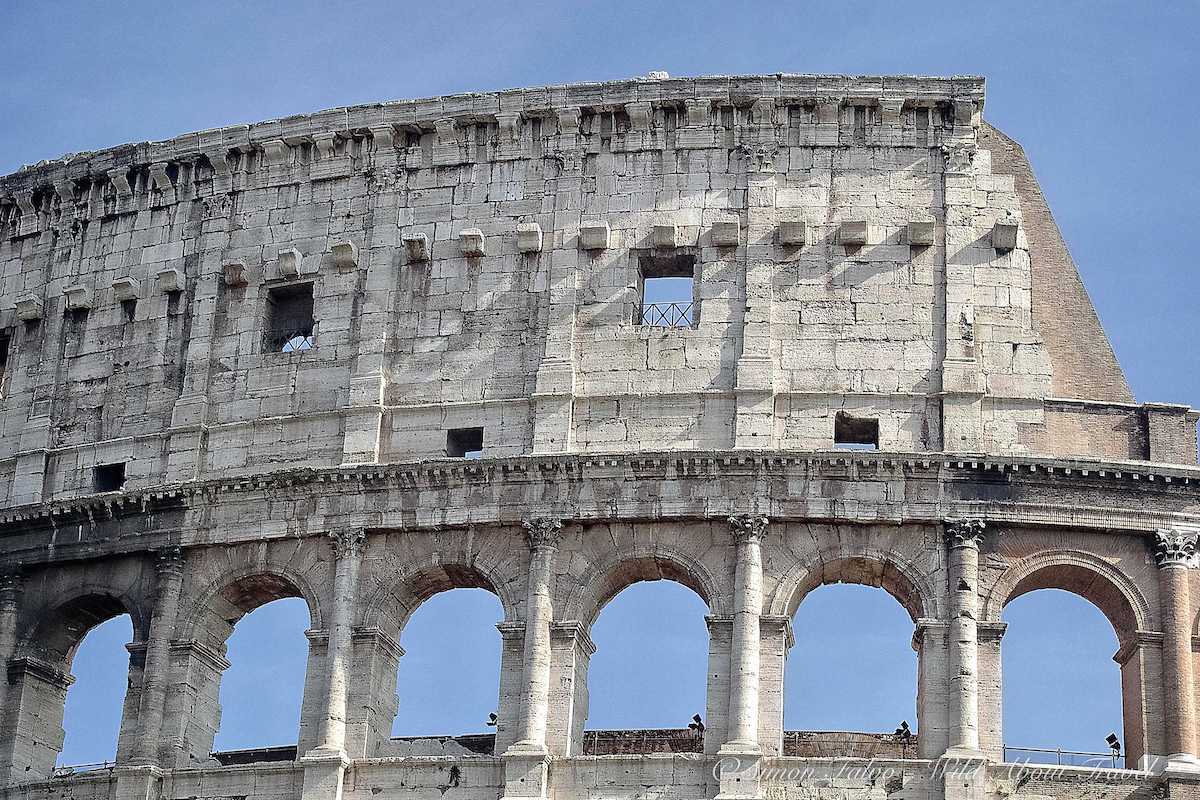
As for architecture, the Colosseum was a true masterpiece (and still is). It could host up to 50,000 spectators, who could effortlessly enter and exit through its complex network of tunnels and staircases. Moreover, the Colosseum was designed to be versatile; it could be flooded to create naval battles or covered with awnings to provide shade.
The Colosseum was an arena where the ancient Romans gathered to be entertained, but it also had a darker side. People were executed for crimes or fed to wild animals as punishment. Even the gladiatorial games were a brutal spectacle, where men fought to the death for the entertainment of the masses.
Today, the Colosseum stands as a symbol of ancient Rome’s glory and excess and is a must-see attraction in Rome. Since it’s one of Rome’s most popular attractions (and of the world), it’s best to arrive early in the morning or late in the afternoon to avoid the crowds and make the most out of your visit. You can (and should) purchase tickets in advance to skip the long lines, and I suggest you buy the combined tickets for the entrance to the Colosseum, Roman Forum, and Palatine Hill.
While you can visit on your own, a guided tour of the Colosseum, together with the Roman Forum and Palatine Hill provides a more in-depth experience. Additionally, you will learn many curious facts about these unique ruins.
Explore the Roman Forum
The Roman Forum is a sprawling archaeological site in the heart of Rome that offers visitors a glimpse into the city’s rich history. In ancient Rome, it was the center of political and social life, and today, it’s one of the most fascinating landmarks in the Eternal City.
The first buildings date back to the 7th century BC. However, many more were added during the following centuries until the fall of the Roman Empire at the end of the 5th century AD.
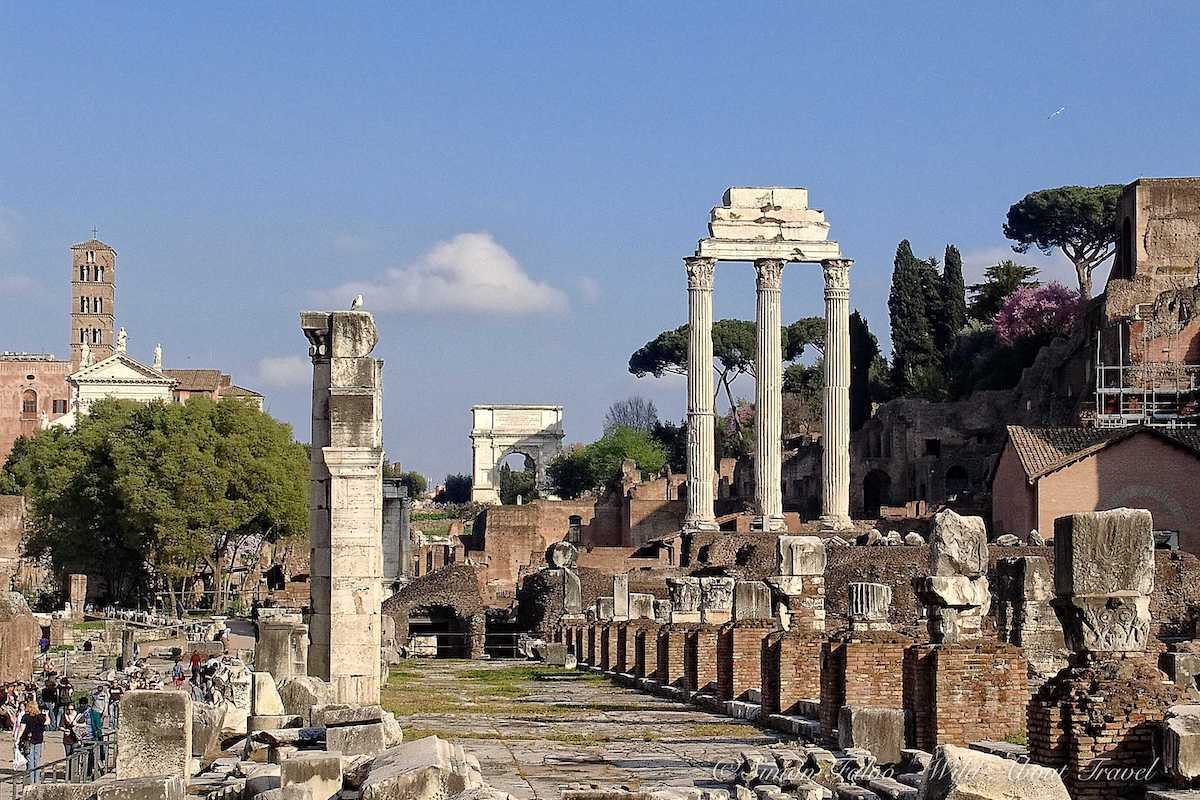
The Roman Forum is one of Rome’s main attractions and is thus usually very crowded. The earlier you get there, the better. Guided tours are available for a more immersive experience – something I strongly recommend – and the best ones combine with a visit to the nearby Colosseum.
As you wander through the Roman Forum, take a moment to appreciate the incredible history surrounding you. This was once the center of one of the greatest empires in human history, and the remaining ruins are a testament to the ingenuity and ambition of the ancient Romans. It’s sure to be one of the highlights of your 3-day Rome itinerary.
Fun Facts – Cats among the ruins
Did you know there is a place in Rome where you can see stray cats sunbathing among ancient ruins? It is the Torre Argentina Cat Sanctuary, right in the plaza where Julius Caesar was stabbed to death on the Ides of March (44 BC).
Enjoy Palatine Hill
Palatine Hill is one of the seven hills of Rome and one of the city’s most ancient part. According to legend, Palatine Hill was where the she-wolf found and raised the twins Romulus and Remus, who would then become the founders of Rome.
Palatine Hill was also where Augustus, the first Roman emperor, established his residence and palace, followed by Tiberius and Domitian. Today, visitors can explore the House of Augustus, the Farnese Gardens, and other ruins while enjoying the stunning views of the Roman Forum and Circus Maximus from the hilltop. In addition, the hill boasts beautiful gardens and walking paths, making it a peaceful escape from the bustling city below.
Capitoline Hill
Capitoline Hill, known in Italian as Campidoglio, is one of Rome’s seven hills near the Roman Forum. It was the site of the ancient Roman Temple of Jupiter Optimus Maximus, considered indestructible and a symbol of eternity.
The Capitolium held an essential sacred function for ancient Rome and, in its history, was also a place that resisted several attempts to invade the city. In the Middle Ages, the hill became the center of the civic government of Rome, located in the Basilica di Santa Maria in Aracoeli. This church was built in the VI century on the ruins of the Juno Moneta’s temple, adjacent to the Piazza del Campidoglio. The huge stairway in the front (124 steps!) was added in the XIV century.
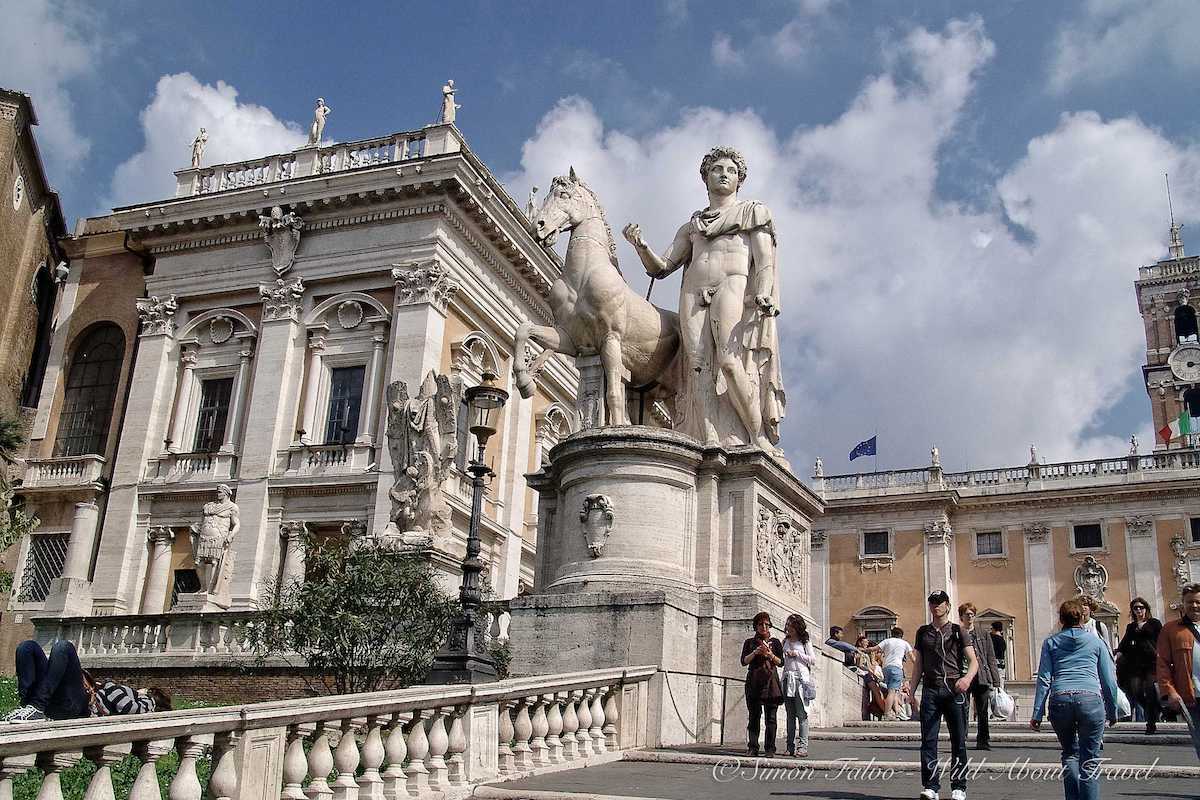
The piazza on the hill was redesigned by Michelangelo in the 16th century and is considered one of the most beautiful squares in Rome. The equestrian statue of Marcus Aurelius at the center of the square, surrounded by three magnificent palaces (Palazzo Senatorio, Palazzo dei Conservatori, Palazzo Nuovo), is an extraordinary example of Renaissance architecture. One of the palaces houses the Capitoline Museums, housing a vast collection of ancient Roman artifacts and art.
Visit the Vittoriano
Even if you don’t specifically look for it, it’s almost impossible to miss the Vittoriano. Also known as The Altar of the Fatherland (Altare della Patria), this massive white marble monument was built between 1885 and 1935 to commemorate Victor Emmanuel II, the first king of a united Italy (proclaimed in 1861). If you plan to visit Milan, the name Vittorio Emanuele II might ring a bell, as it is associated with Galleria Vittorio Emanuele II, Italy’s oldest shopping arcade and one of Milan’s prominent landmarks.
Back to the Vittoriano, the monument features numerous sculptures, reliefs, and allegorical figures. The most famous is the statue of Victor Emmanuel II on horseback, located in the center. While the memorial is a source of national pride for many Italians, it has also been criticized for destroying the medieval neighborhood that once stood on the site. I won’t pretend that the Vittoriano is one of my favorite landmarks in Rome. But it’s up to you to make your own opinion. In any case, the Altar of the Fatherland remains a popular tourist attraction in Rome. Plus, it offers stunning views of the city from its rooftop terrace.
Jewish Ghetto
If you still have some energy left, why not end your second day in Rome visiting the Jewish Ghetto? The Jewish community of Rome is probably the oldest in the world, with a presence that goes back (at least) to 139 BC. However, the ghetto was established only in 1555.
Although it’s now a charming spot, this area was full of poverty and was often flooded by the Tiber River. While strolling around, take a look at the Fontana delle Tartarughe (Fountain of the Turtles), the Theater of Marcellus, and the Portico of Octavia.
An option could also be to get there for dinner, savoring some Jewish specialties like Carciofi alla Giudea (Artichokes).
Tip: Need a quick snack during your wandering? Try one of the traditional kosher bakeries that sell delicious pizza, cakes, and bread.
Rome itinerary: Day 3
It’s now time to move to the left bank of the Tiber River, to complete your 3-day itinerary in Rome.
St. Peter’s Basilica, Vatican Museums, and the Sistine Chapel
Get ready for one of the highlights of your 3-day Rome itinerary. Without a doubt, one of the best things to do in Rome is to visit St. Peter’s Basilica, admire the Vatican Museums, and marvel in front of Michelangelo’s Sistine Chapel. The concentration of so many masterpieces in such a small area is mind-blowing. Thus, get ready for a full immersion into some of the most beautiful artworks in the world.
Being one of the main Rome landmarks, it’s not hard to figure out it’s crowded. Therefore, planning your visit in advance is a must. If not, you’re most likely wasting a lot of time queuing, and by the time you’ll get there, you’ll feel tired and spoil your experience.
You can choose between several options, from simple skip-the-line tickets to guided tours. The advantage of a visit with a guide? You get to learn a lot about the history of the Vatican Museums and their beautiful art collection.
An excellent option is the Skip-the-Line Vatican, Sistine Chapel, and St. Peter’s Tour for a guided visit with a group of a maximum of 20 people.
If you prefer to discover the Vatican Museums and the Sistine Chapel on your own, I strongly advise you to book your fast-track ticket as soon as possible.
I’m planning to get back to Rome soon, and my first choice would be, without a doubt, the Early Morning Vatican Tour. It’s more expensive, but I know that by getting there before the official opening, the huge crowd, and having a tour with a small group, you have a totally different experience.
Castel Sant’Angelo
Castel Sant’Angelo was initially built as a mausoleum for Emperor Hadrian (76-138 AD). It was then neglected until a legendary episode at the end of the 6th century changed everything. A horrible plague hit Rome, and Pope Gregory the Great decided to lead a procession through the city, to ask God for mercy. When he saw the old mausoleum, he had a vision: on the top of the building stood a shining angel, returning his sword to the sheath. Rome was saved!
The bronze statue of Archangel Michael on top of Castel Sant’Angelo still commemorates this episode.
The monument underwent several other changes in its long history. At one point, it even became a papal fortress with dungeons to imprison evildoers and opponents. Today, it is a museum with a charming view of the city.
You can visit on your own and buy a Castel Sant’Angelo skip-the-line ticket in advance. An alternative option is to book a guided tour of Castel Sant’Angelo.
Tip: To optimize your time, visit Castel Sant’Angelo on the same day you discover St. Peter’s Basilica, the Vatican Museums, and the Sistine Chapel.
Trastevere
There’s no better way to end 3 days in Rome than strolling and chilling out in the Trastevere neighborhood. Trastevere (meaning “Across the Tiber River”) is the ideal place to feel the bohemian vibe of Rome. In the daylight, you’ll enjoy strolling in the maze of beautiful alleys dotted with quaint little boutiques, handicraft shops, and ateliers.
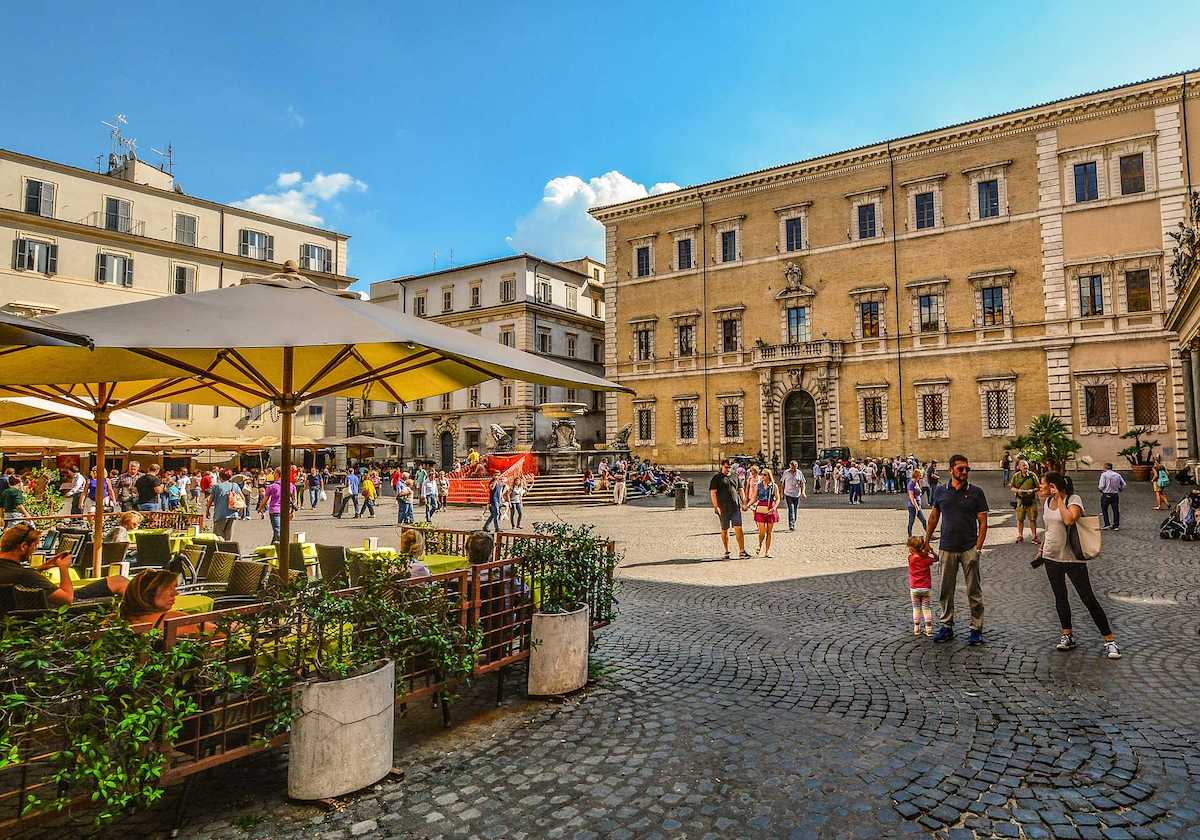
At night, tourists and locals mingle in the area to have fun in a bar or a restaurant. An ideal meeting point to start your visit is Piazza Trilussa. Drink a coffee or sip a drink and then follow the wave.
Discover the best of Rome in 3 days: unique experiences
1. Unusual things to do in Rome
No matter if on foot, by bike, or on a Vespa, there’s no better way than a guided tour to get an introduction to Rome and its many beautiful sights. A guided tour of Rome will give you an overview of the main landmarks.
Afterward, you can go back to your favorite sites and further visit at your own pace.
I selected some of the most interesting Rome guided tours for you. As you can see, the offer is varied – and original, too. For example, take a look at the Golf Cart tour or the Vintage Fiat 500!
- Angels and Demons Official Tour
- 3-hour Segway tour, to cover most of Rome highlights
- Rome Driving Tour By Vintage Fiat 500
- Discover Rome by Golf Cart
- 3-hour e-bike tour of Rome historical center
- Vespa Tour (with optional driver)
- 4-Hour Private Tour with Driver for a personalized experience
2. Romantic places in Rome
It is said that the name “Rome” hides a secret—a secret that will last until the end of the world. Do you want to know about it?
Anagram “Rome”, and you’ll get “Amor”. Love, in Latin. No wonder every corner of The Eternal City is potentially ideal for a proposal or just a romantic walk. Some places are more popular than others, but this doesn’t mean you have to conform.
I’m sure you’ll collect beautiful memories with your loved one every minute of your visit, regardless of the importance of the location. But if you are wondering where locals go as a couple, the “Garden of the Pincio” is probably one of the most popular choices. Go there at sunset, to admire the glorious colors of the Roman sky and the beautiful view of the city’s roofs. The skyline is simply gorgeous. You’ll never forget its beauty.
An alternative to Pincio is Gianicolo Hill. Here, the panorama will leave you breathless, and you’ll see the city skyline from a different perspective. I advise you to visit both since it is impossible to decide which one is the best.
Fun Fact: At the highest point of Gianicolo hill, you’ll see Giuseppe Garibaldi’s equestrian monument. This Italian general was known as the “Hero of the Two Worlds” because he fought for national independence and republican ideals in South America and Europe. He also played a crucial role in Italian unification. At his side, on the battlefield, he always had his wife, Anita Garibaldi, a strong and independent Brazilian woman. She lost her life during a tragic retreat near Ravenna. A romantic (and sad) love story.
For more romance in Rome, take an evening walk along the Lungotevere, lined with the massive 19th-century walls that protect Rome from the floods of River Tiber.
Reach Ponte Sant’Angelo, the famous bridge of angels. Beautiful white marble statues will watch over you, while the gentle sound of the river caresses your ears. You’ll wonder if paradise is really as beautiful as walking on this bridge, which leads to Castel Sant’Angelo.
3. Rome traditional dishes and street food
Every region in Italy (and even small areas) has its own traditional food specialties, and Rome is no exception. While I always marvel at the creativity of Italian cuisine, and the ability to create unique products like Modena Traditional Balsamic Vinegar, I have a few soft spots. I loved the traditional food in Brindisi and overall the Puglia region. Another favorite region of mine is Emilia-Romagna, where you can find such a concentration of traditional food that the area around Parma has been dubbed the “Italian Food Valley“.
One of the most famous dishes is Spaghetti alla Carbonara, although many restaurants outside Rome don’t follow the traditional recipe. Another Roman specialty is Carciofi alla Romana or alla Giudìa, local artichokes cooked in a particular fashion. And there is the Supplì al Telefono, a sort of fried dumpling made of rice seasoned with meat sauce and with some mozzarella in the middle.
There are many more specialties, and one of the best ways to discover local food is by taking a tour. One of the most popular is the Rome Street Food Tour with a local guide. For a more comprehensive experience, check out the 4-Hour Food Tour by Night, where you’ll get to enjoy over 20 different tastings.
4. Day trips from Rome
You could spend one month in Rome, and still discover something new. However, you may only want to visit Rome’s main landmarks and then explore beautiful nearby locations. In that case, Rome is a perfect location for beautiful day trips.
- Villa D’Este & Hadrian’s Villa in Tivoli – One of the most beautiful and overlooked sites near Rome and a UNESCO World Heritage Site.
- Tuscany Taster Tour – A full-day tour to enjoy the smooth hills of Tuscany, visit a couple of charming towns, and savor delicious local food and wine.
- Pompeii & Amalfi Coast – Discover two gems of Italy: the archaeological site of Pompeii and the scenic Amalfi Coast.
*****
Practical Information to Plan your Rome Trip
How to get to Rome
By air: Rome Leonardo da Vinci International Airport is the biggest airport in Italy. It has many domestic flights and a multitude of international connections.
By train: thanks to the high-speed trains, it’s now fast and easy to travel between Italy’s main cities. Getting from Rome to Florence by train only takes 90 minutes. You can reach Milan from Rome in as little as 3 hours, and Venice is less than 4 hours away. Check out the schedules and buy your tickets (the earlier you purchase them, the better prices you might score).
How to get around in Rome
Public transport is the cheapest and most effective way to get around Rome. It is not as bad as the media depicts, so give it a try. However, consider that peak hours are the worst for surface public transport. Traffic jams are still a big issue in Rome. With this in mind, try to avoid the rush hours by moving early or afterward.
Tickets are available at vending machines at Metro stations, newsagents, tobacconists, and bars. You can purchase a one-way ticket (which lasts 75 minutes from validation, Euro 1,50) or a day-pass ticket (6 Euro). Another option is to buy the 48h or 72h Roma Pass, for unlimited travel on all public transport, free access to one or two museums, and additional discounts on other Rome attractions.
Tickets are valid for metro, buses, trams, and urban trains within Rome.
Where to stay in Rome:
There’s no better way to discover Rome’s historic center than walking. Therefore, I suggest choosing your accommodation in Rome near the main landmarks. You won’t be able to avoid public transportation fully, but you won’t need it that much.
Budget
- Vatica B&B Roma is a charming small bed & breakfast less than 1 km from St. Peter Square and close to the Ottaviano Metro Station.
- Temple View features rooms with a classic décor and is only a stone’s throw from the Pantheon.
Medium
- The stylish Parisii Luxury Relais Rome is only 500m from the famous Trevi Fountain in Rome’s historical center.
- MyNavona features modern and stylish rooms and is located 100m from the beautiful Piazza Navona.
Luxury
- Hotel Vilòn – Small Luxury Hotels of the World is a delightful boutique hotel close to Piazza di Spagna.
- Villa Spalletti Trivelli – Small Luxury Hotels of the World is located in a beautiful historic building in the heart of Rome.
Check out more accommodations in Rome.
Last but not least…
Unfortunately, things can and do go wrong when you travel. World Nomads offers coverage for more than 150 activities as well as emergency medical, lost luggage, trip cancellation and more. With peace of mind, your visit to Rome will be all the most memorable. I’ve been using World Nomads for years and have always been happy.
Wrapping things up…
Spending 3 days in Rome may seem like a lot. In reality, even if you rush you won’t be able to see all of Rome’s main attractions. You can still experience a lot, though, especially if you plan your 3-day Rome itinerary beforehand and decide which sites you don’t want to miss.
_________
Note: This post contains affiliate links to carefully selected products and services. That means that if you make a purchase, I earn a little commission at no extra cost to you.
Pin for later!

